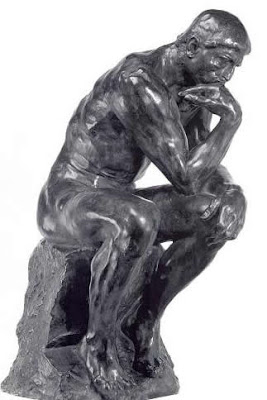Sculpture
Originally named The Poet, the piece was part of a commission by the Musée des Arts Décoratifs, Paris to create a monumental portal to act as the door of the museum. Rodin based his theme on The Divine Comedy of Dante and entitled the portal The Gates of Hell. Each of the statues in the piece represented one of the main characters in the epic poem. The Thinker was originally meant to depict Dante in front of the Gates of Hell, pondering his great poem. (In the final sculpture, a miniature of the statue sits atop the gates, pondering the hellish fate of those beneath him.)" The sculpture is nude, as Rodin wanted a heroic figure in the tradition of Michelangelo, to represent intellect as well as poetry".
Rodin made a first small plaster version around 1880. The first large-scale bronze cast was finished in 1902, but not presented to the public until 1904. It became the property of the city of Paris – thanks to a subscription organized by Rodin admirers – and was put in front of the Panthéon in 1906. In 1922, it was moved to the Hôtel Biron, which was transformed into a Rodin Museum.
More than any other Rodin sculpture, The Thinker moved into the popular imagination as an immediately recognizable icon of intellectual activity; consequently, it has been subject to endless satirical use. This started in Rodin's lifetime.
Further casts
Over twenty casts of the sculpture are in museums around the world. Some of these copies are enlarged versions of the original work, and some are sculptures of different scales.





















































